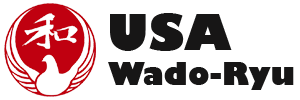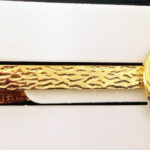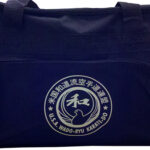Please note that terms used in the martial arts often are specialized terms and may be used differently in conversation. Japanese who are not martial artists are often not familiar with these expressions. For example, the term “nukiuchi” means “suprise attack” in martial arts but in schools it means “pop quiz”.
Pronunciation: i always sounds as ee, as in skeet; u always sounds as oo, as in tool; o always sounds long o, as in pole; a always sounds as ah, as in father; e sounds eh, as in bet. Often the last vowel of a word is not fully pronounced, especially if is a u, or an i ” r” in Japanese has a “d” sound, so that geh-ri (kick) is pronounced more like geh-di. Japanese words that begin with “K” often change the k sound to g when the word follows others in a compound, i.e. ” kumite”, but ” kihon gumite”.
| Commands:
Hajime Kiritsu Kyukei Matte Mawatte Mokuso Motoe Naore Otagai ni Rei Rei Seiza Seiretsu Senpai ni Rei Sensei ni Rei Shokyu Shomen ni Rei Yame Yoi |
Pronunciation:
hah-ji-meh kee-reets kew-kay maht’-teh mah-waht’-teh mow-ku-sow moh-toh-eh now-reh oh-tah-guy-ni ray ray say-zah say-rehts sen-pie-ni ray sen-say-ni ray show-kew show-mehn-ni ray yah-meh yoy |
Meaning:
start come to attention rest wait! turn! clear the mind for meditation return to starting position prepare for standing bow bow to each other bow sit in kneeling position line up at attention bow to the seniors bow to the teacher short break bow to the shomen stop! ready (goto ready stance) |
| Basic counting :
Ichi Ni San Shi Go Rokku Shichi Hachi Kuu (or kyuu) Jyuu |
Pronunciation:
i-chi ni sahn she go rowk-ku shi-chi ha-chi Kuu (or kyuu) Jyuu |
Meaning:
one two three four five six seven eight nine ten |
| Terms | Pronunciation | Meaning |
| Ashi
Ashi-barai |
ah-shi
ah-shi-bah-rah-i |
leg
foot sweep |
| Barai/Harai
Bunkai |
bah-rah-i/hah-rah-i
buhn-kah-i |
sweep away
breakdown of movements |
| Chudan | chew-dahn | middle body |
| Dachi
Domo Dojo |
dah-chi
Do-oh-mo Do-oh-joh-oh |
stance
thank you (lit. in every way) training hall |
| Empi
Empiuchi Empiuke |
ehm-pi
ehm-pi-uch(i) ehm-pi-ukeh |
elbow
elbow strike elbow block |
| Fumikomi | fu-mi-koh-mi | stamp kick |
| Gedan
Geri (or Keri) Gi Gyakuzuki |
geh-dahn
geh-di gi gya-ku-zu-ki |
lower part of body
kick uniform reverse punch |
| Hai
Haito Hara Hidari Hijiate Hiraken Hiza Hizageri |
hah-i
hah-i-tow hah-rah hi-dah-ri hi-ji-ah-teh hi-rah-kehn hi-zah hi-zah-ge-di |
yes (“I understand”)
ridgehand belly, seat of ki left rising elbow strike flat fist knuckle strike knee knee kick |
| Ippon-ken
Ippon-nukite Irimi |
(i)pohn-kehn
(i)pohn-nu-ki-teh i-ri-mi |
one knuckle fist
one finger spear hand entering |
| Jodan
Josokuto Junzuki |
joh-dahn
joh-soh-ku-toh jun-zu-ki |
upper body (usually head)
ball of foot stepping front punch |
| Kagizuki
Karate Kata Keage Ken Kekomi Keri (or geri) Ki Kiai Kime Kizamizuki Koken-uke Kote Kumite Kentsui |
kah-gi-zu-ki
kah-rah-teh kah-tah keh-ah-geh kehn keh-koh-mi keh-ri ki ki-ah-i ki-meh ki-zah-mi-zu-ki koh-kehn-u-keh koh-teh ku-mi-teh kehn-tsu-i |
cross punch
empty hand form snapping fist thrusting kick internal power striking w/ internal power, with yell focus jump-in “jab” punch top wrist block forearm meeting techniques / sparring side thrust hammer fist |
| Mae
Maegeri Maware Mawashi Mawashigeri Mawatte Migi Mikazukigeri Morote Morote-tsuki Musubidachi |
mah-eh
mah-eh-geh-ri mah-wah-reh mah-wah-shi mah-wah-shi-ge-ri mah-waht’-teh mi-gi mi-kah-zki-ge-ri moh-roh-teh moh-roh-teh-tski mu-su-bi-dah-chi |
front
front kick turn “roundhouse” roundhouse kick turn! right crescent kick two handed punch with both hands attention stance |
| Nagashi-zuki
Nagasu Nakadaka-ippon-ken Nidangeri Nihon-nukite Noru |
nah-gah-shi-tski
nah-gah-su nah-kah-dah-kah-(i)pon-kehn ni-dan-ge-ri ni-hohn-nu-ki-teh noh-ru |
Snap punch moving off line of attack
parrying, moving off line of attack fist w/ knuckle of 2nd finger ext. double kick two finger spear hand riding |
| Oizuki
Osae Osaeuke Otoshi Oyayubi-ippon-ken |
oh-i-zu-ki
oh-sah-eh oh-sah-eh-u-keh oh-toh-shi oh-yah-yu-bi-(i)pon-kehn |
Step in front hand “jab”
pressing pressing block with palm of hand dropping thumb knuckle fist |
| Seiken
Shotei Shuto Shuto-uke Shuto-uchi Sokuto Sokutogeri Soto Sukui |
say-kehn
shoh-teh-i sh’toh sh’to-u-keh sh’to-uch’ soh-k’-toh soh-k’to-geh-ri soh-toh s’ku-i |
front fist
palm heel strike knife hand, edge of hand block with knife hand strike with knife hand outside edge of foot side kick with edge of foot outside scooping |
| Tate
Tobigeri Tsuki |
tah-teh
toh-bi-geh-ri ts’ki |
vertical
jumping kick punch, thrust |
| Uchi
Uchiken Uchimawashigeri Ude Ude-uke Uke Uraken Urazuki Ushiro Ushirogeri |
uch(i)
u-ch(i)-kehn uch(i)-mah-wah-shi-geh-ri u-deh u-deh-u-keh u-keh u-rah-kehn u-rah-z’ki u-shi-roh u-shi-roh-ge-ri |
two kanji, can mean inside or strike
uppercut hook kick forearm forearm block, esp. from rev. hand block back fist uppercut to the rear roundhouse kick |
| Waza
Wakarimasuka Wakarimasu |
wah-zah
wah-kah-ri-mas-ka wah-kah-ri-mas |
technique
Do you understand? I understand |
| Yamazuki
Yohan-nukite Yokogeri |
yah-mah-z(u)ki
yoh-hahn-nu-k(i)-teh yoh-koh-ge-ri |
double-punch (throat/groin)
four finger spear hand side kick |
| Zazen
Zenkutsudachi |
zah-zehn
zehn-ku-ts’-dah-chi |
sitting meditation
bent leg front stance |


